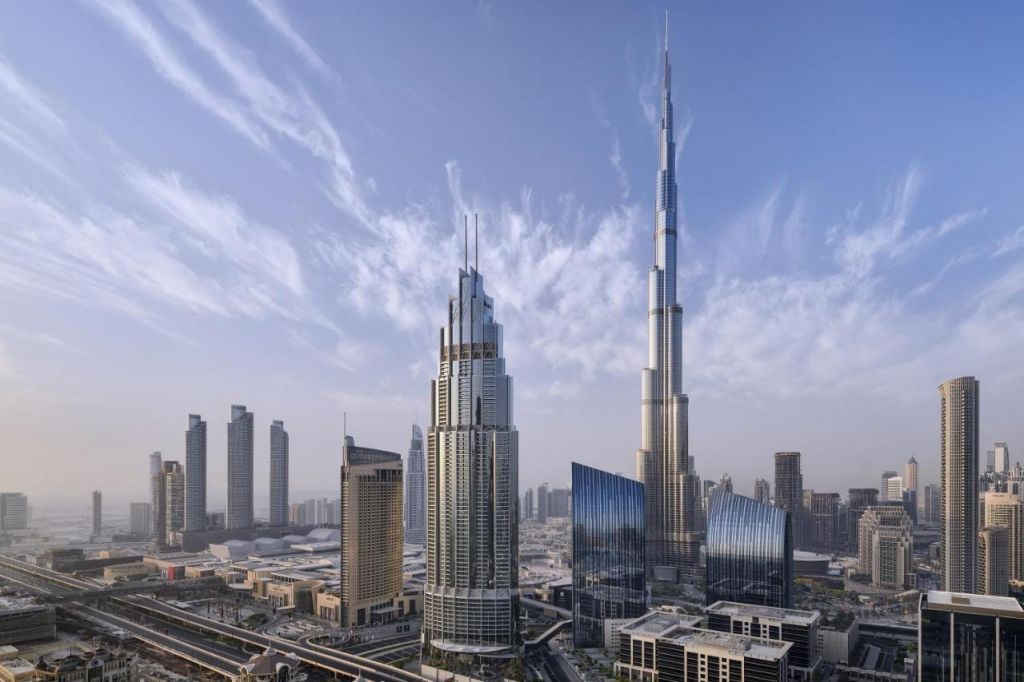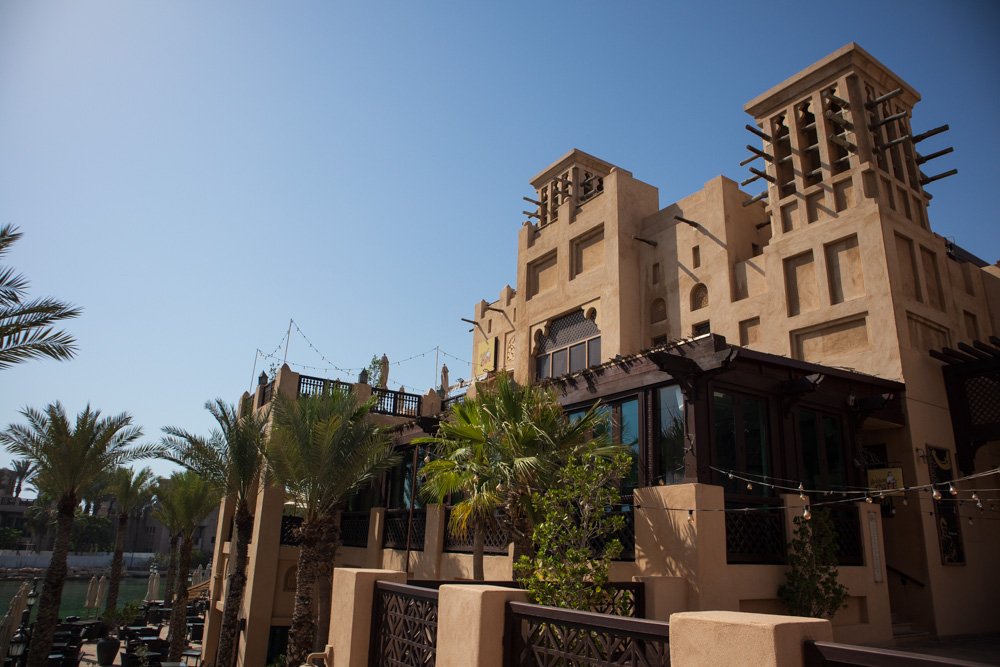Today I really like Dubai, but it was not always like this. My initial visit in 2010 left me with a completely different impression, and I swore off returning. However, a lot has transformed over the years. Despite this, many travellers still hold on to the stereotypical image of this Emirate. In this article, discover why you should reconsider a visit and explore the efforts made to transform it into more than just a metropolis of skyscrapers and shopping malls.
Table of Contents
Dubai in the popular imagination
Probably, if you have not yet visited Dubai, you imagine it as a city immersed in unbridled luxury, with Western sheiks and millionaires driving luxury cars, tourists shopping for expensive brands in shopping malls and all sorts of environmental and architectural excesses, amidst artificial islands and towering skyscrapers.
PLAN YOUR TRIP TO DUBAI
Save money with the Dubai Go City Explorer Pass and enjoy free access to the city’s top attractions such as the sightseeing bus tour, dhow cruise, Aquaventure water park, desert safari, and Burj Khalifa.
The best way to stay connected in the UAE is with a Holafly eSim, which offers unlimited data and fast, reliable internet, ideal for navigating, sharing photos, and staying in touch.
About travel insurance, Heymondo provides excellent value for money and offers comprehensive coverage against unexpected events like medical emergencies, trip cancellations, lost luggage, and more.
Indeed, Dubai is all of these things. Even today, it continues to compete for the record of the tallest skyscraper or the most luxurious hotel. Everyone knows the Burj Khalifa, almost nine hundred metres high, and the Burj al-Arab, with its iconic sail shape. Many of the buildings are huge shopping malls, with flagship shops of the major luxury labels. The city is also home to some of the most luxurious and spectacular hotels in the world, such as the Armani Hotel Dubai or the Burj Al Arab Jumeirah, inside the skyscraper of the same name.

The reasons why I didn’t like Dubai the first time around
My first trip to the UAE was an incredible disappointment, I admit. Before leaving, I was so full of enthusiasm that I even wanted to buy a ski jacket with the Ski Dubai logo of the Mall of Emirates indoor slope to show off when I got home. My guidebook was full of post-its and notes on what to see.
Once I landed, however, I discovered a city a very different from the one I imagined. A city still largely under construction, devoid of soul and above all totally lacking that mythical atmosphere of Bedouins in the desert, souks and Arab hospitality that my guidebook had proposed. I had found a local culture based – or promoted, but I could not tell – on luxury and consumerism.
Historic Dubai almost did not exist. There were no pedestrian areas, only skyscrapers under construction, busy streets of huge off-road vehicles and huge empty buildings with giant ‘to let’ signs. So in 2010, if you didn’t care much for shopping malls and luxury hotels, there was very little left to see.
How Dubai has changed over the years
After this first unexciting encounter, I did not return to the UAE for years. I had even avoided the stop-overs promoted by Emirates and Etihad. Really, I had remained of the opinion that Dubai was a ‘fake’ city with nothing to offer tourists and travellers.
I changed my mind only because of a series of fortuitous events. After the Covid pandemic, in fact, Dubai was one of the few open and safe destinations. It may have been the immense desire to travel and the enthusiasm for the reopening of borders, but the Dubai I found was very different from what I had known in the past.
Of course Dubai still has many contradictions, but over the years most of the critical issues I had noticed on my first trip have faded or disappeared. However, many travellers still retain the idea of a city of luxury and shopping with nothing else to offer. In this article I want to show you the opposite, and why you absolutely must visit today.
Historic Dubai
On my first trip, the city’s history was relegated to a small portion of the city’s territory. A poorly developed historical area, surrounded by high-rise construction and shopping malls. Appreciating historical Dubai was quite difficult and even with a great stretch of the imagination there was very little left to see.
Al-Fahidi Fort
Partly because until the 18th century Dubai was only a small settlement so there were not really any historical buildings like in Europe. Just think that the oldest building in the city, the Al-Fahidi Fort, where the Dubai Museum is housed, only dates back to 1787. The only museum to see at the time of my first visit, or at least the only one actively promoted in guidebooks and tourist brochures was this very fort. Nevertheless, it was a terrible museum that has fortunately been completely renovated.
Deira
To discover the history of the city, apart from the Al-Fahidi fort, it was only possible to visit the Deira district, on the other side of the river Creek from the skyscrapers. However, in Deira many historical buildings are reconstructions and the Gold and Spice Souks are far too neat compared to other Middle Eastern markets. On the Creek River, dhows, the traditional Arab sailboats used to transport goods, used to and still do, but today it has become more of a tourist activity.
Al Fahidi Historical Neighbourhood
Today, historic Dubai is much more valued. Over the years, considerable efforts have been made to promote and tell the history of this Emirate to tourists. The Bastakiya district, where the Dubai Museum is located, has been completely renovated. It has also lost its old name of Iranian origin to present itself as the Al Fahidi Historical Neighbourhood. You can discover historic Dubai by getting lost in its alleyways. Or you can take part in the many guided tours aimed at learning about Emirati culture.
Arriving by taxi, you might confuse the Al Fahidi Historical Neighbourhood with the neighbouring Al Seef or Shindagha neighbourhoods, which have the same architectural style. However, what at first glance look like traditional Arab houses in Shindagha and Al Seef are reconstructions with modern criteria. The Al Seef Heritage Hotel Dubai is also located here to experience sleeping in a traditional dwelling. The style of classical Emirati architecture is also reflected in the Souk Madinat shopping centre, smaller and more pleasant by Emirati standards.
Etihad Museum
For an insight into the emirate’s history, visit the impressive Etihad Museum. With its ultra-modern architecture encapsulates the main events in Dubai’s transformation over the past centuries. Dubai’s historical legacy is thus largely preserved today. You can read it in my article about exploring the old Dubai and the Al Fahidi Historical Neighbourhood.

Walking paths in Dubai
What had shocked me the most on my first trip was discovering that it was not possible to discover Dubai on foot. Not just because of the heat, but because there were no pedestrian streets or at least pavements at all. I still remember the embarrassed faces of hotel and shopping centre staff when I tried to ask about public transport or pedestrian streets. Everyone would suggest taking a taxi.
Fortunately, this too has been resolved. Dubai now offers bicycle lanes and pedestrian areas, especially around the Creek and on the waterfront. Walking through the historic Al Fahidi district and around La Mer beach was really nice. A walk away from the chaotic traffic of taxis and shopping malls.
Although Dubai still has many traffic problems, with the main street always very crowded, the metro lines with their futuristic shell-shaped stops now serve many neighbourhoods. Buses are still mainly used by migrant workers, but slowly the city planning is changing. The city is no longer only car-friendly (read more about how to get around in Dubai with taxis and public transport).
Dubai attractions
My first guided tour in Dubai felt almost as challenging as navigating the city on foot. My intention was to immerse myself in the local culture with a guide. Instead, I found myself caught in a super-efficient and standardized system.
The guide whisked us through hotels in an SUV, barely pausing at the city’s key attractions. Dubai Museum was an optional stop, a brief drive past the Jumeirah mosque, the palm-shaped islands, and the Creek River. Followed by a quick photo stop in front of various skyscrapers. To be frank, the guided tour was just as disappointing as it sounds.
While such tours still exist, today, you have the option to choose more in-depth and customized experiences. Although they may come at a higher cost than the standard hit-and-run visits, these tours provide a unique opportunity to truly explore Emirati culture and understand the evolution of the city’s architecture.
Probably the only attraction that continues to be painful for us Italians is Ski Dubai in the Mall of Emirates. However, those who have never seen snow are still thrilled by the styrofoam-looking snow.
Visiting Dubai: YES or NO
After my first trip I had not wanted to return to Dubai for a long time. I thought I would still find the fake city I remembered. Luckily, I had decided to give it another chance. I really enjoyed this new Dubai and it allowed me to rediscover the Arab Emirates.
My advice therefore is not to rely solely on the prejudices and enthusiastic or negative accounts of those who love or hate Dubai. Dubai is a city with many facets that has changed over the years. May no longer be the same city it was yesterday. You might like the myth of the city built from nothing in the middle of the desert or the idea of driving around in a Tesla limousine. You might be fascinated by this new historical Dubai, as much as you might want to visit all the amusement parks.
Where to stay in Dubai
Often considered a luxury destination, Dubai offers hotels and flats for all budgets and is much cheaper than you think. Below are a few value-for-money establishments that have been tried out by me personally or by friends and fellow bloggers.
For a luxury family holiday, the Bluewaters Beach Hotel, with swimming pools, restaurants to suit all tastes and children’s areas, is a great choice. To spend less but still stay in top-notch facilities, the Hilton Dubai Al Habtoor City or the V Hotel Dubai are great choices, both overlooking the Dubai Water Canal with numerous in-house restaurants to choose from.
Finally, to see Dubai from a different perspective, I suggest you stay at the Al Seef Heritage Hotel Dubai, a unique property built in traditional Arabian style and located a short distance from the historic district and Al Fahidi Fort.
If you’ve made it through the entire piece, share your thoughts in the comments. Let me know what impression Dubai left on you and whether your perspective on this Emirati city has evolved over time.
